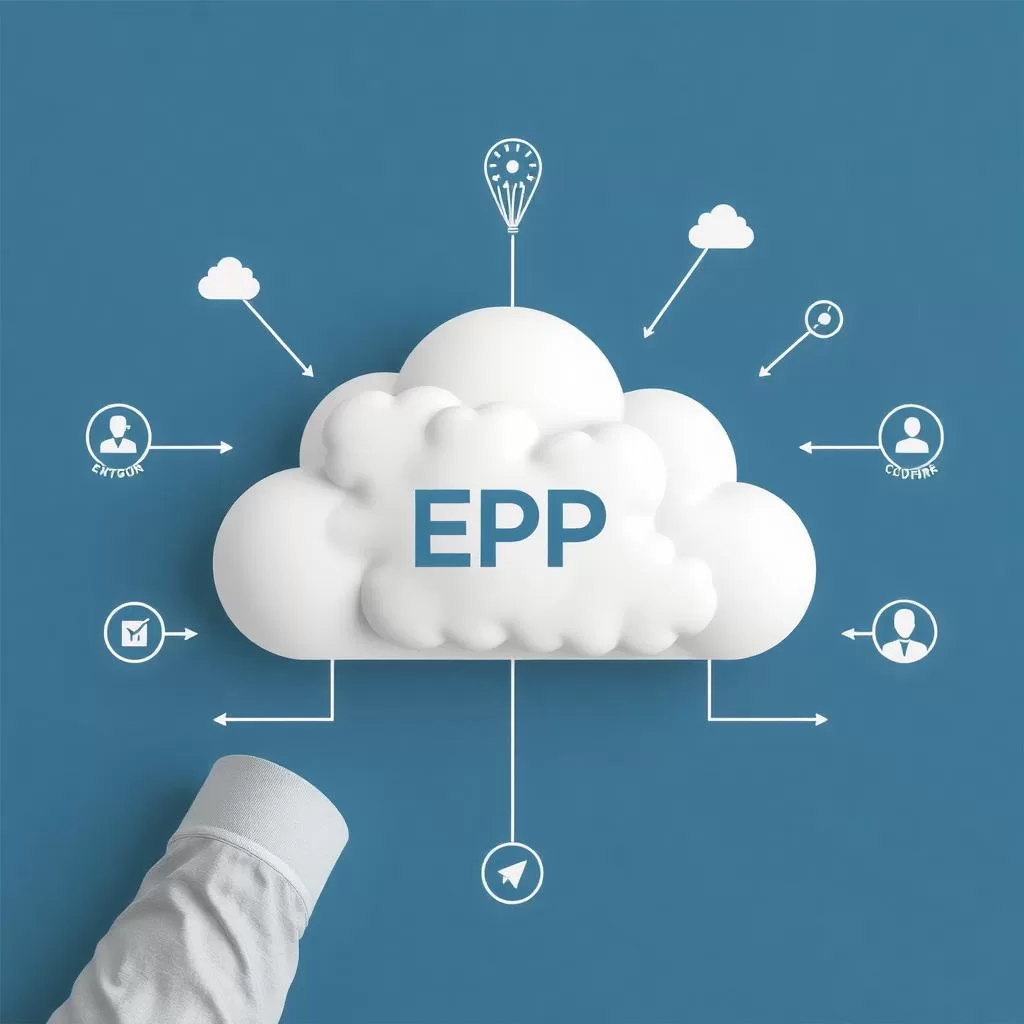The Rise of Fintech: How Digital Payments Are a Game Changer
The financial industry is undergoing a massive transformation. As a result, traditional banks are being challenged by fintech startups, mobile wallets, and blockchain-based payment solutions. Moreover, by 2025, the global fintech market is expected to reach $500 billion. This growth is driven by the rise of cashless transactions, AI-powered banking, and the expansion of decentralized finance (DeFi). Consequently, these innovations are reshaping the financial landscape, making it more accessible, efficient, and secure. We will therefore have a deep look on the rise of fintech.
In this article, we’ll explore:
- The growth of fintech and its impact on global transactions
- How digital wallets, AI, and blockchain are shaping the future
- The challenges and opportunities in fintech adoption
What Is Fintech?
Fintech, short for Financial Technology, refers to the use of cutting-edge technology to deliver financial services in faster, smarter, and more efficient ways. As a result, it is transforming how individuals and businesses manage, move, and grow their money. With innovations such as mobile banking, blockchain, and AI-powered solutions, fintech is making financial services more accessible and user-friendly, while enhancing security and reducing costs. Consequently, this revolution is reshaping the financial landscape for the better. Below are the core areas where fintech is making a major impact:
Areas in which Fintech is making impact
- Digital Payments
Platforms like Google Pay, Apple Pay, and Stripe enable instant, secure transactions through smartphones or online interfaces. As a result, they eliminate the need for cash or physical cards, making payments more convenient and accessible. This is particularly beneficial in regions with growing mobile adoption, where traditional banking infrastructure may be limited. Consequently, these platforms are playing a key role in driving financial inclusion by allowing users to make quick and secure transactions on the go. - Cryptocurrency Transactions
Fintech enables the use of decentralized currencies such as Bitcoin, Ethereum, and stablecoins. These digital assets allow for global, peer-to-peer transactions without traditional banking intermediaries, reducing costs and increasing speed—especially in cross-border payments. - AI-Driven Banking Solutions
Artificial intelligence is being used for everything from automated investment platforms (like robo-advisors) to fraud detection and personalized financial advice. This allows users to make smarter financial decisions, reduce human error, and manage their finances with minimal effort. - Peer-to-Peer (P2P) Payments
Apps like Venmo, PayPal, and Cash App make it easy for individuals to send and receive money directly. Whether splitting a bill or paying rent, P2P payments eliminate the need for cash or checks, making everyday transactions simpler and faster.
As fintech continues to evolve, it’s reshaping the global economy—making financial services more inclusive, accessible, and personalized than ever before.
💡 Why It Matters:
Fintech reduces costs, increases transaction speed, and makes financial services accessible to millions without traditional banking.
The Growth of Digital Payments
The Surge in Digital Payment Adoption
Digital payment adoption has soared globally in recent years. Several key drivers are accelerating this trend and reshaping how people and businesses handle money:
✅ Fintech Innovation
Platforms such as Stripe, PayPal, and Revolut are revolutionizing global commerce. They provide easy integration for businesses, multi-currency support, and fast settlement times—making it simpler than ever to send and receive money across borders.
✅ E-Commerce Growth
As more consumers shift to online shopping, the need for fast, reliable, and secure payment systems has exploded. Digital wallets and instant checkout options have become essential for both merchants and shoppers, enabling smoother purchasing experiences.
✅ Rise of Cashless Economies
Countries like China, Sweden, and India are leading the way in reducing reliance on cash. Mobile payment apps, QR codes, and NFC-based payments are now common, allowing people to make everyday purchases with just a smartphone.
📍 Global Trends in Digital Payments fueling the rise of Fintech
Different regions are showcasing how digital payment technologies can transform financial systems. Here’s how key countries and continents are leading the shift:
✅ Africa: Mobile Money Inclusion
Services like M-Pesa are transforming the financial landscape by offering mobile money solutions to millions without access to traditional banks. In countries like Kenya, mobile payments are used for everything—from groceries to school fees—fostering financial inclusion and economic empowerment.
✅ China: Mobile Wallet Dominance
Over 90% of payments in China are made through WeChat Pay and Alipay. These super apps have become an integral part of daily life—used for everything from paying rent to booking transportation—making China a global leader in cashless transactions.
✅ India: UPI Revolution
India’s Unified Payments Interface (UPI) is one of the most advanced real-time payment systems in the world. It processes over 10 billion transactions monthly, enabling instant transfers across banks with just a phone number or QR code. This has dramatically expanded digital access across urban and rural areas alike.
🔗 Related: The Future of QR Code Payments
How AI Is Transforming Financial Services
Artificial Intelligence (AI) is playing a huge role in fintech, with applications like:
AI-Powered Fraud Detection: A milestone in the rise of fintech
Banks and fintech companies are increasingly relying on artificial intelligence to strengthen transaction security. By leveraging AI algorithms, they can detect suspicious activities and prevent fraud before it causes damage.
✅ Real-Time Protection
Platforms like Stripe Radar and PayPal’s AI systems instantly block fraudulent payments by analyzing patterns and anomalies in transaction data.
✅ Behavior-Based Monitoring
Machine learning models study user behavior—such as login times, purchase history, and device usage—to quickly flag unusual or high-risk activities.
👉 As a result, AI doesn’t just react to threats—it predicts and prevents them, making digital payments safer for everyone.
Robo-Advisors & Automated Investing
AI-powered platforms such as Betterment and Wealthfront are transforming the way people invest by offering intelligent, automated solutions.
✔ Personalized Investment Portfolios
These platforms assess your financial goals, risk tolerance, and timeline to create tailored portfolios—no financial advisor needed.
✔ AI-Based Stock Analysis
Machine learning algorithms analyze vast amounts of market data to identify trends and recommend optimal investment strategies.
✔ Low-Cost, Automated Trading
By automating trades, these services reduce human error and minimize fees, making smart investing more accessible to everyday users.
👉 As a result, AI is democratizing wealth ma
AI Chatbots & Virtual Assistants
Fintech apps are increasingly integrating AI-powered virtual assistants to enhance user experience and streamline support.
✔ Bank Chatbots
Leading banks now offer intelligent chatbots like Bank of America’s Erica and Wells Fargo’s AI assistant, which help users check balances, track spending, and get financial advice—all through natural conversation.
✔ Faster Issue Resolution
AI-driven support systems quickly analyze user queries, troubleshoot problems, and provide real-time assistance, reducing wait times and improving satisfaction.
👉 As a result, these virtual assistants are making financial services faster, more accessible, and user-friendly—all while cutting operational costs.
🔗 Related: AI Digital Marketing Guide
Blockchain & Cryptocurrencies in Fintech
Blockchain technology is revolutionizing the financial sector by introducing new ways to handle transactions, reducing reliance on traditional banks and intermediaries.
✅ Fast Cross-Border Payments
With the rise of cryptocurrencies, blockchain enables instant, low-cost international transactions, cutting out delays and fees associated with conventional bank transfers.
✅ Decentralized Finance (DeFi)
Blockchain’s DeFi applications are eliminating middlemen in lending and borrowing, allowing users to directly transact with one another through smart contracts. This creates a more inclusive financial system without banks acting as intermediaries.
✅ Smart Contracts
Blockchain’s smart contracts automate transactions by self-executing when predefined conditions are met. This ensures secure, transparent agreements without needing third-party verification.
👉 By empowering individuals and businesses with greater control over their financial activities, blockchain is paving the way for a more efficient, decentralized financial future.
📍 Key Innovations in Blockchain Payments paving the way for the Rise of Fintech:
Blockchain technology continues to reshape the financial landscape, bringing new innovations that promise to enhance the speed, security, and accessibility of payments. These innovations are at the heart of Fintech’s growth, revolutionizing both traditional and emerging financial systems.
✔ Bitcoin Lightning Network
Firstly, the Bitcoin Lightning Network is designed to solve one of Bitcoin’s biggest challenges: slow and expensive transactions. By creating off-chain payment channels, the Lightning Network allows for instant, low-cost Bitcoin transactions. As a result, this innovation makes micro-payments feasible, enhances scalability, and opens up Bitcoin for everyday use, ranging from buying coffee to transferring funds globally.
✔ Stablecoins (USDT, USDC)
In addition, stablecoins like Tether (USDT) and USD Coin (USDC) are backed by fiat reserves, such as the U.S. dollar. As a result, they combine the speed and efficiency of cryptocurrencies with the stability of traditional currencies. This makes them an ideal solution for cross-border transactions and e-commerce. Furthermore, their stability helps protect users from the extreme price volatility seen in other cryptocurrencies. This fosters confidence and encourages wider adoption in everyday transactions.
✔ Central Bank Digital Currencies (CBDCs)
Governments worldwide are exploring Central Bank Digital Currencies (CBDCs). These digital currencies aim to bring the benefits of digital payments to national economies. At the same time, they maintain regulatory oversight. For example, China is leading the charge with its digital yuan. This state-backed currency promises to revolutionize payments and tracking. CBDCs offer several advantages. They enhance security, enable faster payments, and improve monetary policy control. Ultimately, CBDCs pave the way for a more digital and centralized financial system.
👉 Overall, these innovations are unlocking new possibilities in the global payment ecosystem. They are making transactions faster, cheaper, and more secure. At the same time, they address challenges like scalability, volatility, and government regulation. As these technologies continue to evolve, they are laying the foundation for a new era of digital finance.
Challenges & Risks in Fintech Adoption
Despite its benefits, fintech faces regulatory, security, and adoption challenges:
Cybersecurity Threats
Fintech companies are revolutionizing the way we manage and transfer money, but with great power comes great responsibility. Given their handling of sensitive financial data, these companies are prime targets for a variety of cyber threats. As the adoption of digital payments and financial services grows, so does the risk of data breaches and fraud. These threats include:
❌ Hacking & Data Breaches
As fintech platforms store vast amounts of personal and financial data, they become attractive targets for hackers. Cybercriminals often attempt to breach these systems to steal account details, credit card information, or even complete customer identities. In addition, if a breach occurs, it can have devastating consequences, not only for the victims but also for the reputation of the fintech company.
❌ Identity Theft & Financial Fraud
Another growing concern is identity theft. Fraudsters use stolen personal information to open fake accounts, initiate unauthorized transactions, or even take out loans in victims’ names. This type of fraud often goes unnoticed until the damage is already done, making it critical for fintech companies to implement strict identity verification and fraud detection systems.
❌ Phishing Scams Targeting Digital Wallets
Phishing scams have become increasingly sophisticated. Cybercriminals often trick users into revealing their login credentials or personal information by sending fake emails or text messages that appear to be from legitimate fintech platforms. These scams are especially dangerous for users of digital wallets, as they are directly linked to financial assets.
💡 Security Tip
To mitigate these risks and protect your personal and financial data, always enable two-factor authentication (2FA) on your fintech accounts. Additionally, use strong, unique passwords for each account. For added security, consider incorporating biometric authentication, such as fingerprint or facial recognition. By following these best practices, you can significantly reduce the chances of falling victim to cyber threats.
Regulatory Uncertainty
As fintech continues to disrupt traditional financial systems, regulatory frameworks are struggling to keep pace. While innovation thrives, governments are still catching up with the rapidly evolving industry, creating an atmosphere of uncertainty for both companies and consumers. This regulatory ambiguity presents several challenges for the fintech sector:
🔹 Crypto Regulations Vary by Country
One of the biggest challenges in fintech is the inconsistency of cryptocurrency regulations across the globe. For example, China has banned cryptocurrencies, citing concerns over financial stability, while El Salvador has embraced Bitcoin as legal tender. This stark contrast in regulatory approaches creates a complex landscape for companies operating internationally and poses challenges for investors and users alike.
🔹 GDPR & Data Privacy Laws
Another significant issue is the GDPR (General Data Protection Regulation) and other data privacy laws. These laws impact fintech companies that handle personal financial data. These regulations are crucial for safeguarding user privacy and establishing trust. However, they also impose strict requirements on data collection, storage, and sharing. Compliance can be costly and complex. This is especially true for smaller fintech startups. However, it is necessary to ensure the protection of sensitive information and avoid hefty fines.
🔹 Navigating Regulatory Challenges
As governments work to establish clearer guidelines for fintech operations, businesses must stay informed and adaptable. This will ensure the rise of fintech reaches its maximum potential. For instance, businesses must regularly update their compliance strategies. These updates should align with changing rules, whether in data privacy or cryptocurrency regulation. Without a clear and unified regulatory framework, fintech companies face considerable uncertainty, which could affect their operations and long-term viability.
Digital Divide & Financial Inclusion
Despite the rapid growth of fintech services globally, not everyone has equal access to these innovative financial solutions. Several barriers prevent large portions of the population, particularly in rural and developing regions, from benefiting fully from the fintech revolution. These include:
🔹 Lack of Internet Access in Rural Areas
In many rural parts of the world, reliable internet access is a significant challenge. As a result, individuals cannot access online banking, mobile payment apps, or other digital financial services. Without stable and fast connections, these essential services remain out of reach. Consequently, this digital divide creates a gap between urban and rural populations, leaving many people unable to engage in the digital economy.
🔹 Low Financial Literacy about Digital Payments
While fintech has made financial services more accessible, financial literacy remains a barrier. Many people, especially in underserved communities, may not fully understand how to use digital payment platforms safely. Misunderstanding the benefits, risks, and functionalities of fintech services can lead to hesitancy or misuse. Consequently, education about digital financial tools is crucial to ensuring broader adoption and proper use of these services.
🔹 Limited Smartphone Penetration in Developing Countries
In developing countries, a lack of access to smartphones can be a critical limitation. As many fintech services are designed to work primarily on smartphones, individuals without access to these devices cannot take advantage of digital wallets, mobile banking, or other fintech products. Therefore, this issue further exacerbates the challenge of financial inclusion in these regions. This limitation also exacerbates existing inequalities in access to technology and financial services. This is a major setback to the rise of fintech.
The Future of Fintech & Digital Payments paving way for the Rise of Fintech
Fintech is constantly evolving with new technologies and trends: Below are some of the trends promoting the rise of fintech
🔮 1. AI-Driven Finance
- AI will personalize banking experiences with predictive analytics.
- Smart AI bots will replace human financial advisors.
🔮 2. DeFi & Smart Contracts Fueling the Rise foo Fintech
- More people will use DeFi platforms like Aave & Compound to lend/borrow crypto.
- Blockchain-based remittances will replace traditional banking fees.
🔮 3. Embedded Finance & “Buy Now, Pay Later” (BNPL)
- Platforms like Klarna, Affirm, and Afterpay will expand BNPL services.
- Retailers will integrate fintech payments directly into their websites/apps.
Conclusion: The Rise of Fintech Is the Future of Global Finance
The rapid rise of fintech is reshaping the global financial landscape, offering transformative solutions that drive greater financial inclusion, streamline payments, and enhance security. As fintech continues to expand, it is imperative to address challenges such as regulatory uncertainty, accessibility, and security risks to ensure its sustainable growth. The future of finance is undoubtedly digital, and fintech companies will be at the forefront of that revolution.
For further reading, you can explore this article: “The Future of Fintech: How Digital Payments Are Reshaping the Global Economy” – Harvard Business Review
These sources provide in-depth insights into the ongoing fintech revolution and its implications for both global finance and everyday consumers.
🚀 Key Takeaways:
- Fintech is disrupting traditional banking with digital payments.
- AI-powered fraud detection and blockchain payments are the future.
- Fintech will improve financial inclusion but must address cybersecurity & regulation challenges.
💬 What are your thoughts on the future of fintech? Share in the comments!
Share this content:







Post Comment